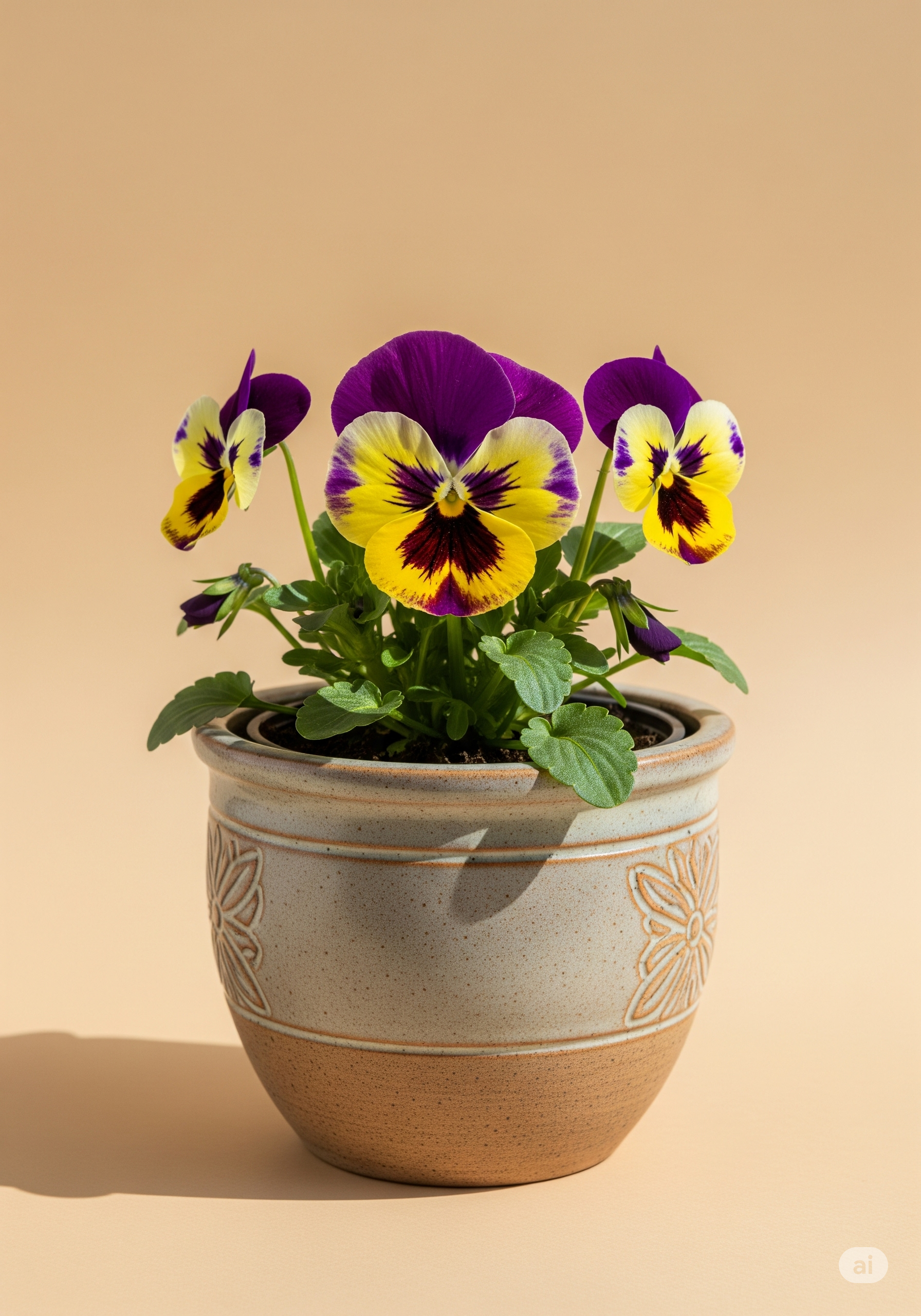Pansy

Scientific name: Viola tricolor
☘️ Toxicity: Safe for cats
☀️ Ideal light: Bright indirect light or soft morning sun
💧 Watering: Moderate; keep the soil lightly moist
Pansy is a charming herbaceous plant that thrives in mild climates and produces delicate, colorful flowers. Ideal for pots, balconies, and window boxes, it adds a romantic touch to bright indoor spaces. Completely safe for cats, it’s a favorite among those who love gentle, cheerful blooms.
Essential care
- Light: Prefers full sun to bright partial shade. In hot climates, protect from harsh afternoon light.
- Water: Keep the substrate slightly moist, watering when the top layer begins to dry. Avoid waterlogging.
- Substrate: Fertile and well-draining — 2 parts potting soil, 1 part compost, 1 part sand or perlite.
- Temperature: Grows best between 10–22 °C (50–72 °F); struggles in very hot weather.
- Fertilization: Every 15–20 days during the growing season with a balanced flower fertilizer (NPK 10-10-10).
- Maintenance: Remove wilted flowers to prolong blooming and maintain compact growth.
Pests and how to handle them
- Aphids: Spray with diluted neem oil or mild soap water.
- Slugs and snails: Use natural barriers such as coffee grounds or copper tape around pots.
- Fungal issues: Improve air circulation and avoid overhead watering.
Propagation
- Seeds: The most common method — sow in moist, light substrate; germination occurs in 10–15 days.
- Self-seeding: In garden beds, pansies often reseed naturally after flowering.
Cat safety
- Classification: Non-toxic to cats (ASPCA confirmed).
- Best practice: Keep flowers clean and free from chemical fertilizers if accessible to pets.
- Fun fact: The entire plant is edible for humans and often used as decoration in salads and desserts.
💡 In European landscaping, pansies are classic symbols of early spring and cool-weather gardens, valued for their resilience and cheerful color palette.
Frequently asked questions
- Can pansies grow indoors? Yes, if placed near a bright window or under grow lights.
- Do they bloom all year? Mainly in cool seasons — spring and fall.
- How to make them last longer? Deadhead often and protect from strong heat.
Quick checklist
- ☀️ Bright light or gentle morning sun
- 💧 Keep soil lightly moist
- 🪴 Fertile, well-draining substrate
- ✂️ Remove spent blooms
- 🐾 Safe for cats